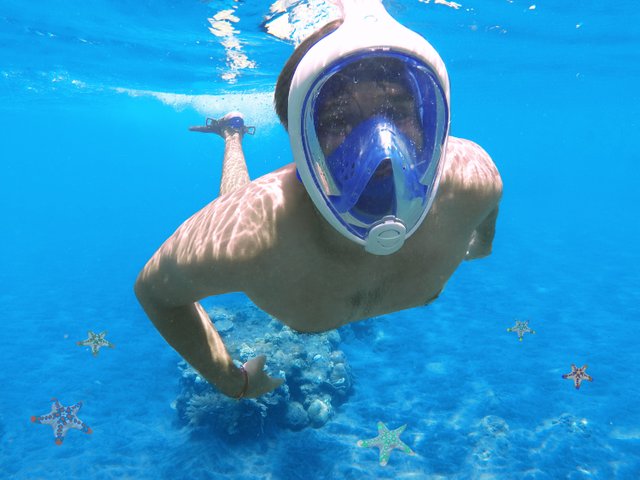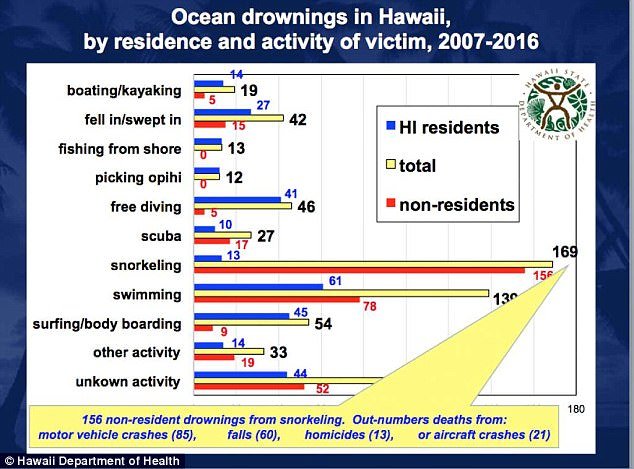How these diving masks can kill you
More deaths each year sparked the debate about safety and Hawaii is leading the conversation.

You may remember when in 2015 full-face snorkeling masks made their debute on the market.
They seemed easy to use, which made them popular over the next few years.
Until earlier this year, nine people died in Hawaii in the span of two weeks and some of the deaths lead to investigation regarding safety of the diving gear used.
Tragic deaths in January 2018
There were at least nine diving related deaths in Hawaii this January. Out of these, two people were found to be wearing the full face covering diving mask at the time. There is not much information about details of the masks in question, due to ongoing investigation.
With an average of 17 deaths a year, this major spike in accidents involving snorkeling alarmed the Hawaii's officials. The State Department of Health launched an investigation which should test the safety of various types of diving gear - including the full face diving masks.

How do we test the safety of these masks?
Dr. Philip Foti spoke at the annual drowning-prevention conference in Honolulu, where he presented his plan to create a gadget that could test the breathing resistance of diving masks.
“I am trying really hard to get a device that will allow us to be the filters of which snorkels to use and which snorkels not to use. We need to find out how to test them and then what to do about protecting people from using them.”
Read more about the conference on this post by Civil Beat and watch the video below.
The manufacturer gets involved
HEAD/Mares is one of the main brand manufacturers of full-face diving masks. They reached out to Hawaii's Department of Health to work with them on the research of the safety of these masks. The company published a statement regarding the carbon dioxide buildup in their products:
“CO2 buildup measured on the HEAD full face mask is at around 50% of the maximum allowed limits set by EN250 at a breathing rate of 10 liters per minute (slow and calm breathing) and at around 20% of the maximum limit when breathing at a rate of 62.5 liters per minute (e.g. breathing heavily with still deep breaths in a panic situation). In other words, the higher the stress level, the higher the breathing rate, and the better the mask performs.”
While that's nice to hear, considering the questions raised by the officials and relatives of people who died, it is clear something goes wrong and more people drown each year. Some of them have experience as lifeguards, some of them are just enthusiasts, either way, we should not dismiss their relatives' efforts to warn people about the possible dangers of diving.
Guy Cooper from California is fighting for a recognition since his wife, Nancy Peacock, drowned while using her new diving mask in 2016. He expressed his concerns in a review on Amazon, but it was taken down, mysteriously… But his effort wasn't in vain, because it prompted Hawaii's officials to start keeping track of the diving gear involved in drowning incidents on the islands.
If you're interested in learning more about Guy and Nancy's story, read this article.
I have one - what to do now?
Whether you own the mask already, or are considering purchasing it, proceed with caution. More research needs to be done about the effects of CO2 build-up and overall safety. Unless further investigation proves that the mask is unsafe, people will be able to buy it and use it. Perhaps diving instructors and schools will opt out of using them, perhaps not.
Many people still have positive view of the full-face diving masks. After all, they were originally inspired by scuba diving masks and gas masks, which were tested for decades. Some diving instructors recommend them, but are cautious with beginners.
If you want a really comprehensive guide to a safe use of full-face diving masks, you can find more information in this post by watchyourselves.com.
However, there are still good old snorkeling goggles, which are quite easy to use and proven to work. Always pay attention to safety while diving, communicate with others, let them know if something feels wrong and don't panic! : )
krakenlife.com
Please upvote: https://steemit.com/free/@bible.com/4qcr2i
I own one myself and I have never thought about the build up on CO2 that would be harmful to me. I must say that I have much more enjoyed my snorkeling adventures since I own this mask. I have done many hours on the mask and no fog at anytime which is a big improvement for me. You do need to make sure you don't clog up the mask when you don't have the proper position. The breathing is something I haven't thought about being the part that could make it dangerous.
I wonder always out of the those stats how many people were beginners? They have become confident and adventures in areas they may have not? I'm not a confident swimmer so for this reason I always were my own lifevest and try to stick to distance I most confident with. My partner is very confident in the water but take this in consideration to not place both of us in distressing situations.
Saying that being in the water always has its risk as you are just at tiny fish in the ocean